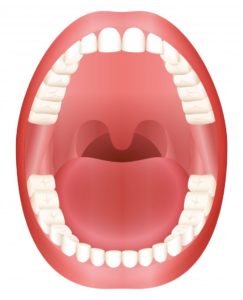
From your dog to your truck and much more, the better understanding you have of how something works, the more effectively you can take care of it. The same goes for your mouth in your efforts to maintain good oral hygiene.
Keep reading to learn the parts of the mouth from your dentist in Melbourne and find out how each one assists the other. Your teeth may get most of the attention, but there’s a lot more going on in the human mouth.
How Do My Lips, Cheeks, and Tongue Help My Teeth?
Your lips and cheeks contribute to everything from forming your facial expressions to breathing and speaking. They also keep food and saliva in your mouth while you chew. These strong muscles brace your teeth to keep them in the proper position.
The tongue is a powerful muscle that facilitates chewing, swallowing, speaking, and tasting food. Taste buds, sensory receptors on your tongue, enable you to enjoy the food you eat.
In fact, the human tongue can have up to 10,000 taste buds, which help you detect sweet, salty, bitter, and savory flavors. The pressure the tongue applies within the mouth helps the oral cavity maintain its shape and keeps the teeth properly positioned.
How Do My Gums, Salivary Glands, and Alveolar Bone Relate to My Teeth?
Your mouth’s gum tissue holds your teeth in place and protects the roots from decay. You may be familiar with gum disease, and the main symptoms include swelling and chronic bleeding. These warning signs are important because unchecked gum disease can lead to tooth and bone loss.
You have six salivary glands that produce the clear liquid known as saliva, which is made up predominantly of water and contains substances that break down food to begin the digestive process. Saliva also moistens your mouth to help with speaking, chewing, and swallowing.
Plus, it washes bacteria from your teeth and gums. The proteins and minerals in saliva play a vital role in protecting the enamel, as well.
The alveolar bone is not a well-known portion of the mouth. The roots of your teeth anchor them in your jawbone. The alveolar bone surrounds the roots to stabilize the teeth.
What Is the Function of My Temporomandibular Joints?
This part of the mouth is rarely discussed. Your two temporomandibular joints facilitate your ability to chew, speak, and swallow. They also enable your mouth to open and close, as well as allow you to move your lower jaw forward and side to side.
These joints are located on both sides of your head near your ears and work together with your jawbone, facial muscles, and ligaments. Any disruption to the synchronization of this pair, which can happen if you grind your teeth at night, can result in facial pain, difficulty in chewing, and jaw stiffness.
Being diligent in the care of your teeth is doing yourself a great service, but it is helpful to understand what other components of your mouth are doing and the purpose they serve. Brush your teeth and gums, floss, rinse with an antimicrobial mouthwash, and visit your dentist twice each year so they can perform a thorough cleaning and ensure your oral health is up to par.
About the Author
Dr. Beverly Rose earned her dental doctorate from the University of Florida and she has been working hard for patients in the Melbourne area for more than two decades. She regularly attends clinical seminars for the International Association of Comprehensive Aesthetics, the American Dental Association, and the American Academy of Cosmetic Dentistry. Dr. Rose and her team have also completed extensive postgraduate training at the prestigious Las Vegas Institute. She knows that it’s important for a dentist to be knowledgeable about the entire mouth, instead of only the teeth. To schedule a dental cleaning and exam, you can visit her website or call (321) 259-4666.
